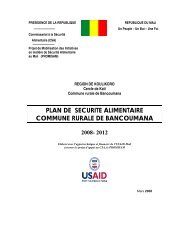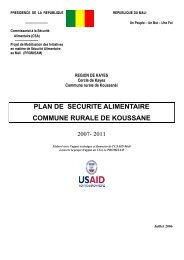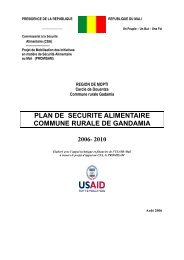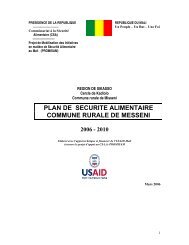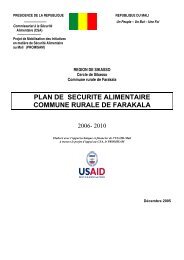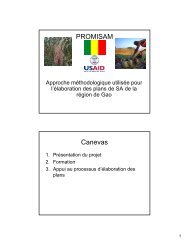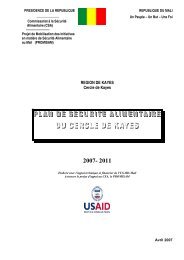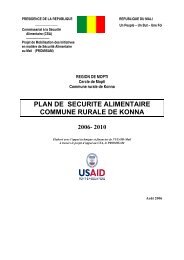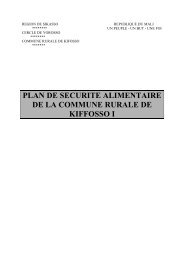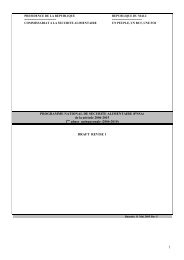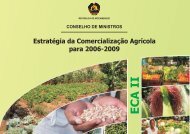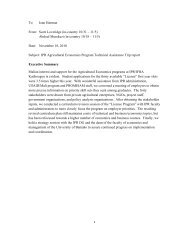STATA 11 for Windows SAMPLE SESSION - Food Security Group ...
STATA 11 for Windows SAMPLE SESSION - Food Security Group ...
STATA 11 for Windows SAMPLE SESSION - Food Security Group ...
Create successful ePaper yourself
Turn your PDF publications into a flip-book with our unique Google optimized e-Paper software.
Stata <strong>11</strong> Sample Session Section 3 – Tables and other Types of Analysis<br />
Converting categorical variables to<br />
indicator variables<br />
generate byte age18p = ca3>=18 if ca3 < .<br />
tab1 age18p<br />
Then, any missing values in ca3 would also be missing in<br />
the new variable age18p.<br />
Suppose that you want to do regression analysis and control<br />
<strong>for</strong> effects of the different geographic regions. We have a<br />
variable called district which has 3 categories. We want to<br />
create indicator variables <strong>for</strong> the three districts. These<br />
types of variables are also called dummy variables. First<br />
let’s run the describe command to look at the contents of<br />
the file:<br />
describe<br />
Next let’s look at the values and labels <strong>for</strong> the variable<br />
district:<br />
label list district<br />
To make 3 indicator variables we can type:<br />
tabulate district, generate(district)<br />
Now, run the describe command again:<br />
describe<br />
Three new variables have been created, called district1,<br />
district2, and district3. We can examine the variables using<br />
the tab1 command.<br />
tab1 district*<br />
The variables district1, district2, and district3 can now be<br />
used <strong>for</strong> regression analysis as dummy variables. They<br />
contain either a 0 or a 1.<br />
101



